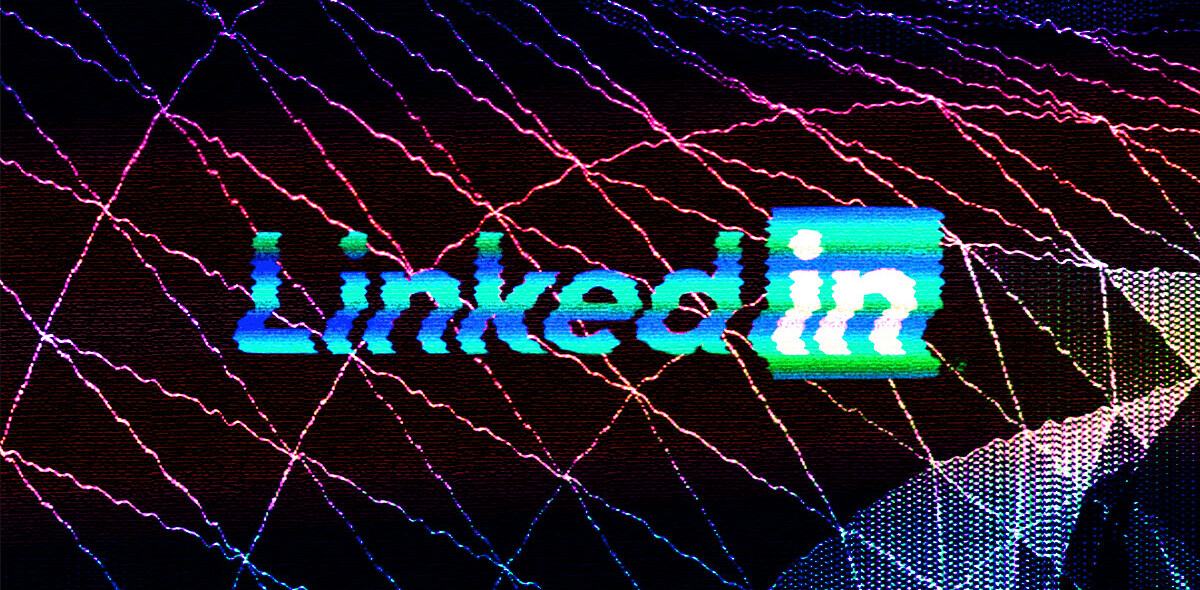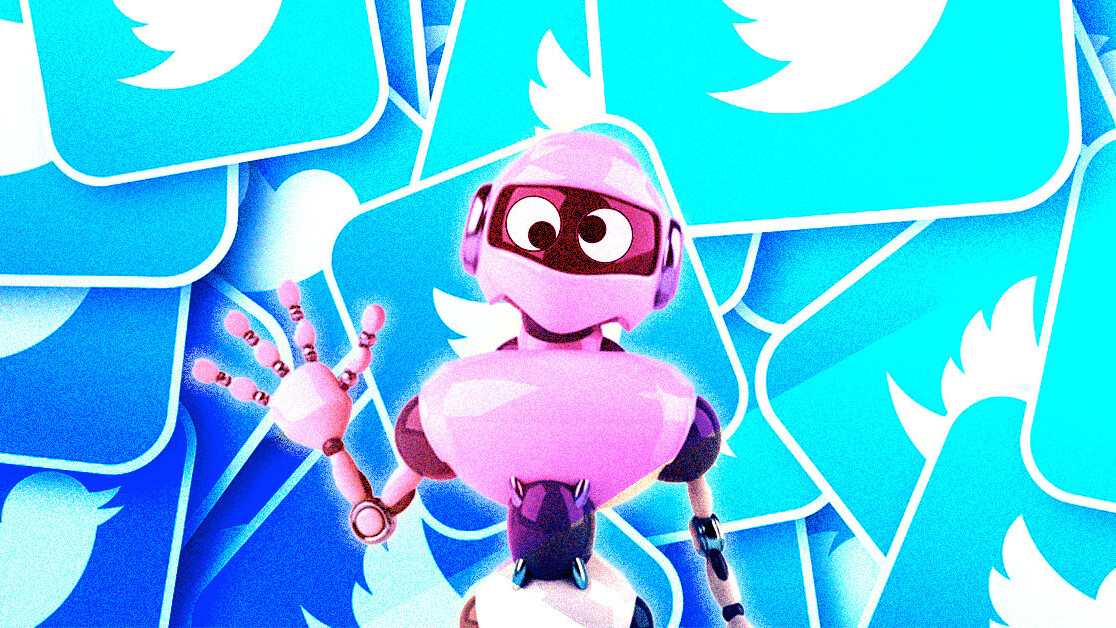
It’s the 21st century and automation sits on the brim of just about everything in business — customer service, development, and of course, marketing.
But is more automation always a good thing?
Social media automation helps social media managers be more efficient in their job. You can bulk-schedule your content. You can cross-post quickly and easily. With a bit of code, you can probably do a whole lot more.
But while you can do all this, it is important to avoid overreliance on automation tools.
If you want to grow on social media, your strategy cannot simply consist of creating content, scheduling them in as posts, and then forgetting all about them. Without human involvement, you’ll miss out on various critical aspects of social media, because automation couldn’t help you there.
Let’s dig deeper into a few of them.
1. Automation won’t help you make use of precious real estate
Cross-posting is a popular feature on social tools that allows you to quickly post (or schedule) the same content across a bunch of different platforms. You write one thing, and it can go out on Instagram, Twitter, and Facebook all at once.
Read: [AI is great news for digital marketers who are bored of being data drones]
The problem with cross-posting is this: every social platform has its own little nuances that make creating content for each of them a slightly different challenge.
Most importantly, they have different cut-off points or “preview” windows for the captions you write. Check out this comparison of LinkedIn, Twitter, Facebook, and Instagram:

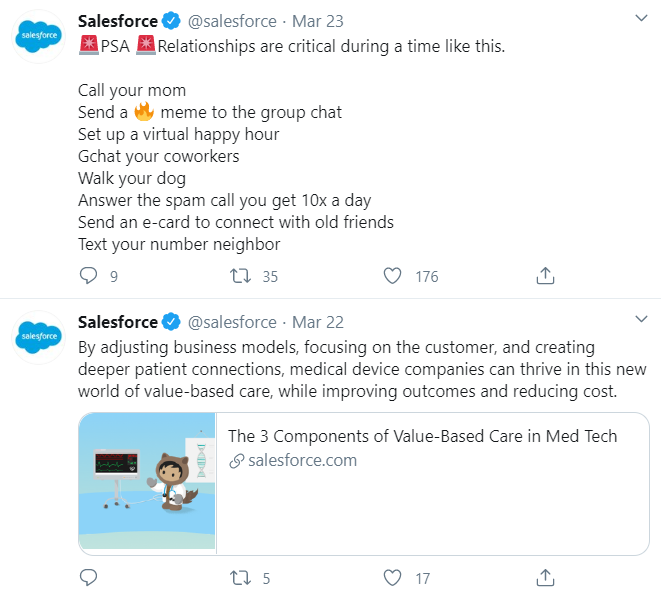

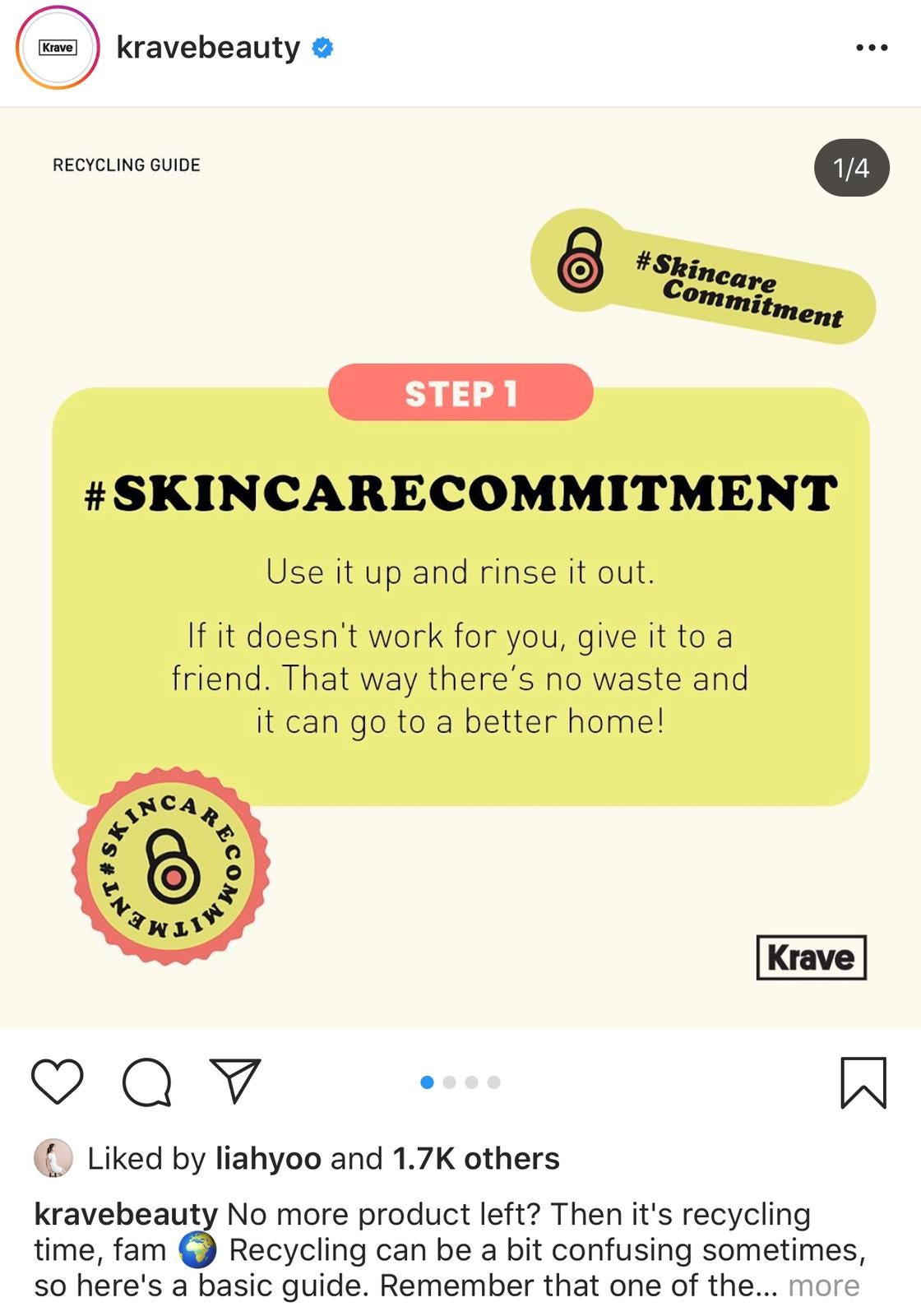
These few lines or words that show up by default is prime real estate. It is your first and foremost chance to grab a passing reader’s attention! But because this space varies, the exact same couple of lines may look different when posted across different platforms.
On Facebook, it may be attention-grabbing enough, but on Instagram, where only the first two lines or so are revealed, it may not. Consequently, your content may attract people on some platforms, but not on others.
Other than the precious attention-grabber “real estate,” each platform’s caption character limit and recommended length also differ:
While you may not always write to fill up the whole character limit, the ideal length of a social media post is still something worthy to take note of when creating content.
By relying on cross-posting, you’re missing the chance to attract as many people as you can. Don’t let it do that to the content you’ve put lots of time and effort into creating. Personalize and optimize each social media post for each social media platform as much as you can.
2. Automation perpetuates human error
Here are some other ways relying on automation can jeopardize your posts, based on how platforms differ:
Links
Instagram is notorious for not having clickable links in their captions. Hence, you’d want to remember to put Link in bio on your Instagram post caption to direct your viewers to your content, instead of cross-posting something like Check it out here: [link] everywhere.
Also, remember to manually update that link in your bio if you’re not paying for something like a link tree.
Usernames
More often than not, the same account’s username varies slightly across different platforms. By cross-posting everything, you risk not tagging some of the people you meant to on certain platforms.
Directly involving others in your social posts is one of the most surefire ways to get noticed. Make sure you do it right!
Hashtag best practices
It’s easy to assume that hashtags are well encouraged across all social media platforms. But research from Hootsuite and Buffer shows that the optimal number of hashtags to use actually varies for each platform.
What might be the most interesting to note is that on Twitter, engagement drops by 17% for tweets with more than two hashtags.
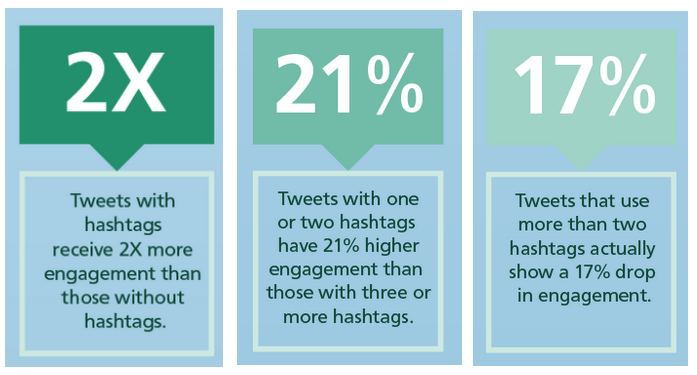
And on Facebook, posts without hashtags actually fare better!

You might also think that you know the most popular hashtags for your topic, but are you sure they the same across all platforms? Instead of blindly cross-posting the same text everywhere, do some research to find out the best mix of hashtags to optimize visibility across all channels.
As a quick rule of thumb, it’s good to use a mix of semi-popular hashtags (more) and mega-popular ones (less) to boost visibility.
Format and features
The format and features of posts from platform to platform also differ slightly.
On Twitter, you can create polls, Moments, and threads — all of which can only be done organically. On LinkedIn, you can publish articles. Currently, none of the existing social media tools support scheduling these forms of content. So if you rely on scheduling, you are actually limiting the types of content you produce.
There are also different optimal media dimensions, file sizes, and video length limits across platforms. If you cross-post and just use one image size, your social media tool will proceed to upload it as long as it fits. The result? Your content is paired with an ill-fitting image. And as it is a well-known fact that multimedia posts get more engagement, it’s worth getting your visuals right.
Post relevancy
If your social media strategy relies on scheduling posts in advance, you’re going to miss out on real-world events and trending topics that happen as they do. Arby’s social media team probably knew that when they tweeted Pharrell during the Grammys (and got a reply!):
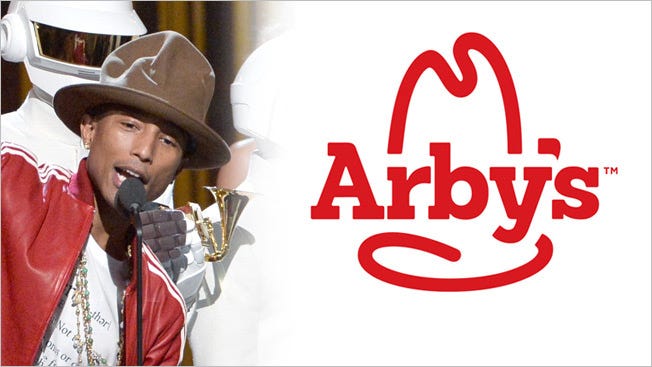
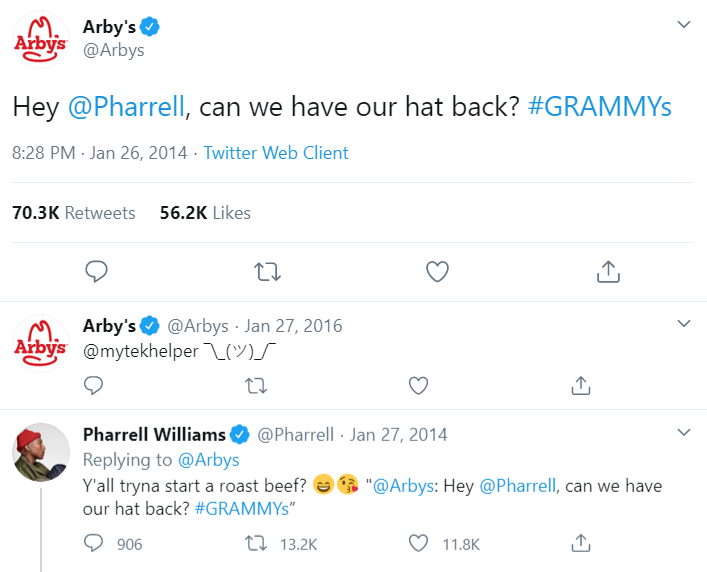
You might also risk posting things that are no longer relevant or correct if you forget to go back into your social media scheduler to edit them.
All the social media tools I’ve worked with (Hootsuite, Sprout Social, Later— to name a few) do not filter out these types of human mistakes. Of course, you can schedule some posts. But to fully optimize your content, posting organically is still required.
3. Automation also does not produce engagement
A Sprout Social study found that social media users expect quite a lot out of a brand. They want brands to be honest, funny, friendly, and helpful, to name a few. As Neil Patel puts it, they want something real.
Today, users want real interactions with real people that form real connections. They know when it’s a Twitter bot, and they don’t want that.
This means that it is crucial for you, a human, to engage on social media. Other than giving your audience what they want, engagement also comes back to help you. It is what pumps up your post, shows it to more people, and keeps the content alive on feeds and timelines longer.
How will automation help you here?
Social listening may help you keep track of engagement better — including those not directly tagging you — but other than that, it’s up to you to roll up your sleeves and actually get your hands dirty in the social media world.
You can’t just rely on bulk scheduling content and leave it at that.
You need to come back on the platform and use your human wits to engage back with users in a way that feels authentic. After all, it’s what users want.
Fast food queen Wendy’s knows how to do this best:

Wendy’s being Wendy’s on Twitter
And here’s them just replying back all day:


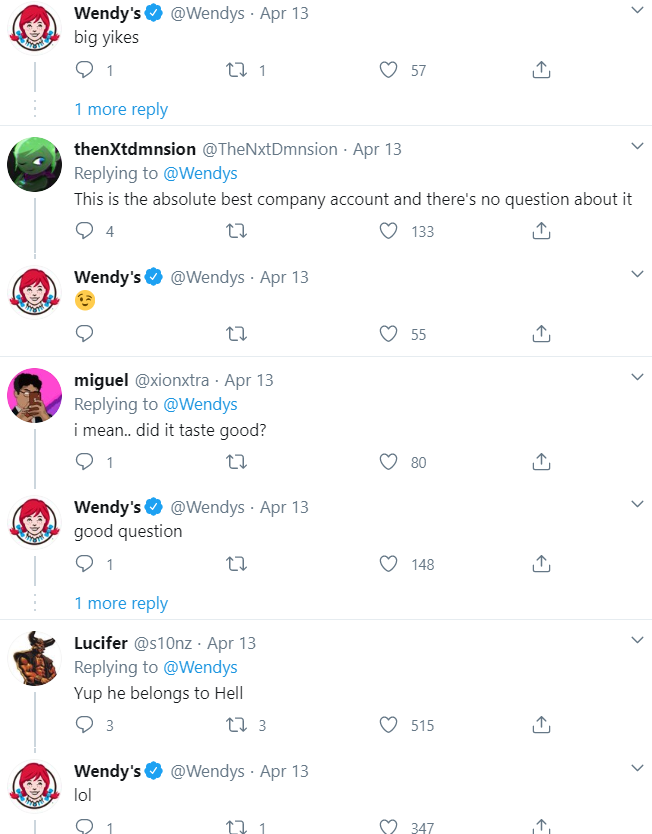
It’s literally somebody’s full-time job.
Wendy’s isn’t even the only one. Elon Musk is pretty good at keeping things real, too:

Now you might be thinking, you don’t even get that much engagement, so what’s there to reply to anyway? You’re not Wendy’s. Scheduling posts and leaving them is fine because you’re not missing out on anything anyway.
The answer to that is: are you planning to stay that way?
Because here’s another thing automation won’t do for you.
4. Automation will not open up opportunities
Starting off, Wendy’s-level engagement may seem like a distant dream. However, it is definitely not impossible.
If you’re not getting any engagement, consider if it may be the time you tried making the first move.
Make friends on social. Show your work to others who you think would enjoy them. Social is social — it’s not meant to be conquered alone.
Tactfully promote your works in conversations, comments, and other avenues that you see fit.

Join Twitter threads, comment on LinkedIn posts, and maybe try to get a leg up by writing for a relevant Medium publication that has more readers first. Just make sure that whatever you’re saying adds value.
Second, you need to do some research. For example, look up the keywords you are targeting. Are you using the terms people search for?
Go through what other players in your industry are doing. Study what other “successful” social media personalities are doing, and think of how you can tailor it for your own company. Take on Reddit and search up relevant threads. Get the opinion of your colleagues, or take your research a step further and ask your customers.
Research should be the foundation of your social strategy. You can’t just assume what you’re doing right, or wrong, or ways you can improve, you need to know.
By doing this, you might get ideas on how to improve your content, copy, and cadence. You might find people you could potentially collaborate with. You’ll get both inspiration and lessons, and you’ll gain something new.
So if your social strategy is simply on the automation tool level, you risk letting your low engagement stay that way. You’ll miss out on finding new opportunities gained by making friends and doing research — which have to be done by you.
Just to be clear, I’m not saying “Drop all your social media automation tools now.”
They do help speed up work. What I’m saying is don’t rely on it. Simply cross-posting, bulk-scheduling, and then forgetting about your posts is not enough. You still need to put in the time to use and learn social media organically.
So know what to automate, but realize that you yourself also need to get involved. Overreliance on these tools takes away the time-tested success formula to social media — being social as humans.
This article was originally written by Tricia Aurelline Atmadja for Better Marketing, a publication providing advice that works and covering digital and social media marketing, tools, and case studies. You can read the original piece here.
Get the TNW newsletter
Get the most important tech news in your inbox each week.

